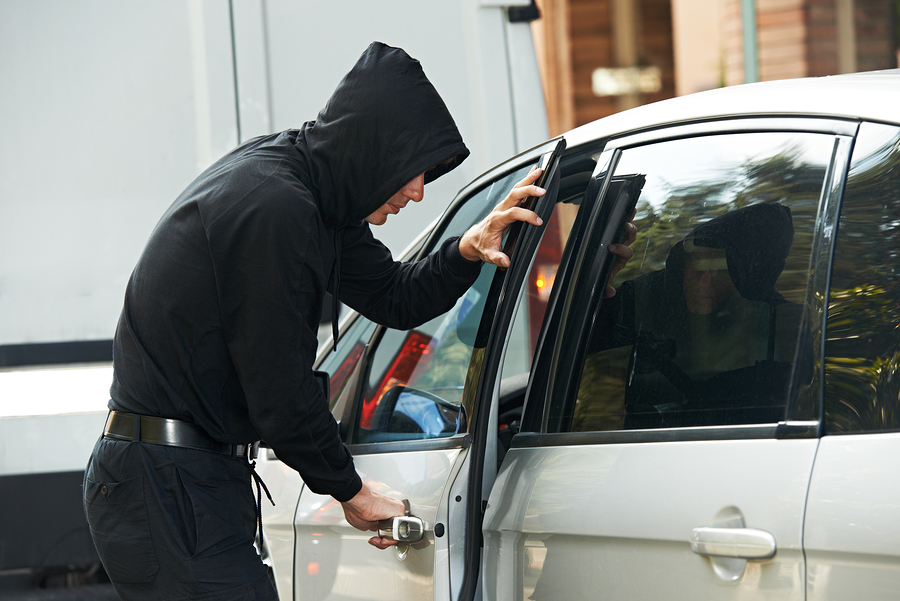Although technological advances mean that our cars are safer than ever, car thieves are themselves upgrading and updating their hardware to try and catch out latest security innovations.
With West Yorkshire found in seventh place within the top ten regions for stolen vehicles in 2015, it’s important to understand just what you need to do to protect your car.
Check your number plates
Having your number plates stolen is certainly annoying, and it’s something that not everyone takes seriously.
However, there could be something all the most sinister occurring if you find that your number plates have been taken.
More often than not, criminals use stolen number plates by fitting them onto similar-looking vehicles so that they can get away with crime – which could be anything from drug dealing to not paying at petrol stations.
This will often lead to police having to check and question innocent people who have had nothing to do with the crimes that have been committed with their plates.
If you find that yours are gone one day, it’s essential that the police know about it as soon as possible.
Learn about pinch and park

Tracking devices are key pieces of technology for ensuring that cars are located if they have been stolen.
That said however, car thieves have developed tactics to avoid arrest. This involves the practice of stealing a vehicle only to park it nearby for a series of days in the event that the car is being tracked.
If the car is not picked up by authorities after that period of time, the thieves then take the car away knowing that it is “safe” to drive. It is thought that high performance cars and 4×4 are prime targets for pinching and parking.
A Home Office report said that:
“Anecdotal evidence from officers working on vehicle crime in the Metropolitan Police Service suggests that some offenders routinely park a vehicle in a safe location for a few days immediately after stealing it to check it is not being tracked.
“This would suggest that boosting the number of vehicles with tracking devices might reduce the ‘rump’ of more organised vehicle theft that remains.”
If you find that your car is missing, it might actually be worth getting a friend or relative to drive you around the local area, where you can check side streets and public car parks. Although the chances might be slim, you could just come across it.
Consider an immobiliser if your car was built before 1998

While thieves have found ways around GPS trackers, immobilisers are pretty great for ensuring that your car won’t get far if it is stolen – and what’s more, they’re in all cars built after 1998.
For those with classic or kit cars, it’s worth installing one if you find your vehicle without one. It’s also worth doing your research, as some devices are more secure than others – a Thatcham approved alarm is usually the way to go.
It’s worth noting that there are many different Thatcham categories for immobilisers:
Category 1
Any system under this category will be one of the most complex and effective immobilisers on the market. A Category 1 alarm will have advanced features such as ignition detection alongside movement detectors. The alarm will also run off its own battery supply rather than the one used by the car.
Category 2
A category 2 immobiliser will conform to all the same standards of a category 1 immobiliser but will not have an electronic alarm as part of its package.
Category 2.1
This category system is achieved by upgrading an immobiliser in the category 2 system with the addition of an electronic car alarm. By adding an alarm that conforms to category 1 standards, you could see a decrease in your premiums.
Category 3
Unlike the aforementioned categories, these devices are entirely mechanical, and physical systems that need to be set. Devices in this category can come with steering wheel and gear level locks also.
Category 4
While it is true that many cars come with alloy wheels that can benefit from wheel locking nuts, to qualify as Thatcham-approved category 4 devices, the nuts have to be reliable and durable and offer a safe and secure key replacement service.
Category 5
As discussed earlier in the article, there are types of immobilisers that are able to track where a stolen vehicle is, using GPS trackers, and these can have the capability to immobilise a car remotely.
Category 6
A category 6 device may be able to locate a stolen vehicle, but it will not have the ability to remotely immobilise it.
Category 7
This is a device that relies on a very simple way of locating a vehicle.
Employ tactical parking

If you’re parking on the road, turn your wheels in towards the kerb, or if in a car park, turn your wheels towards another car. By doing this, you will greaten the effort that it take will to discreetly take the car away.
What’s more, if you park on your drive, it is best to face in, rather than reverse. You can also employ the wheel turning technique here.
It’s always best to park in your drive as car thieves don’t tend to like getting too close to houses.
